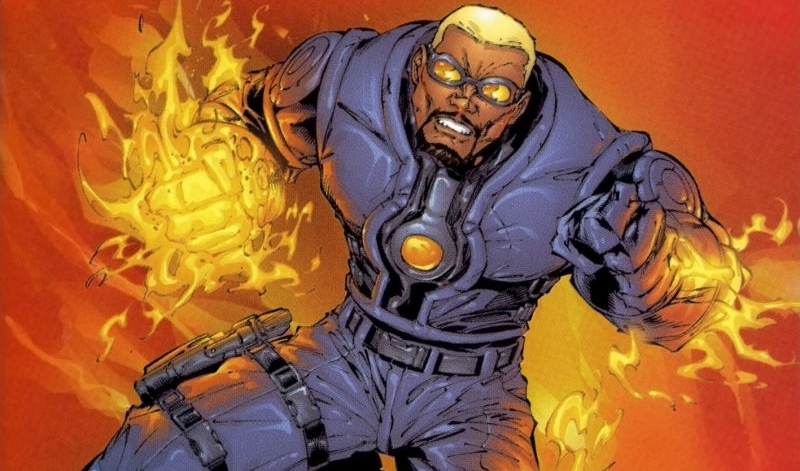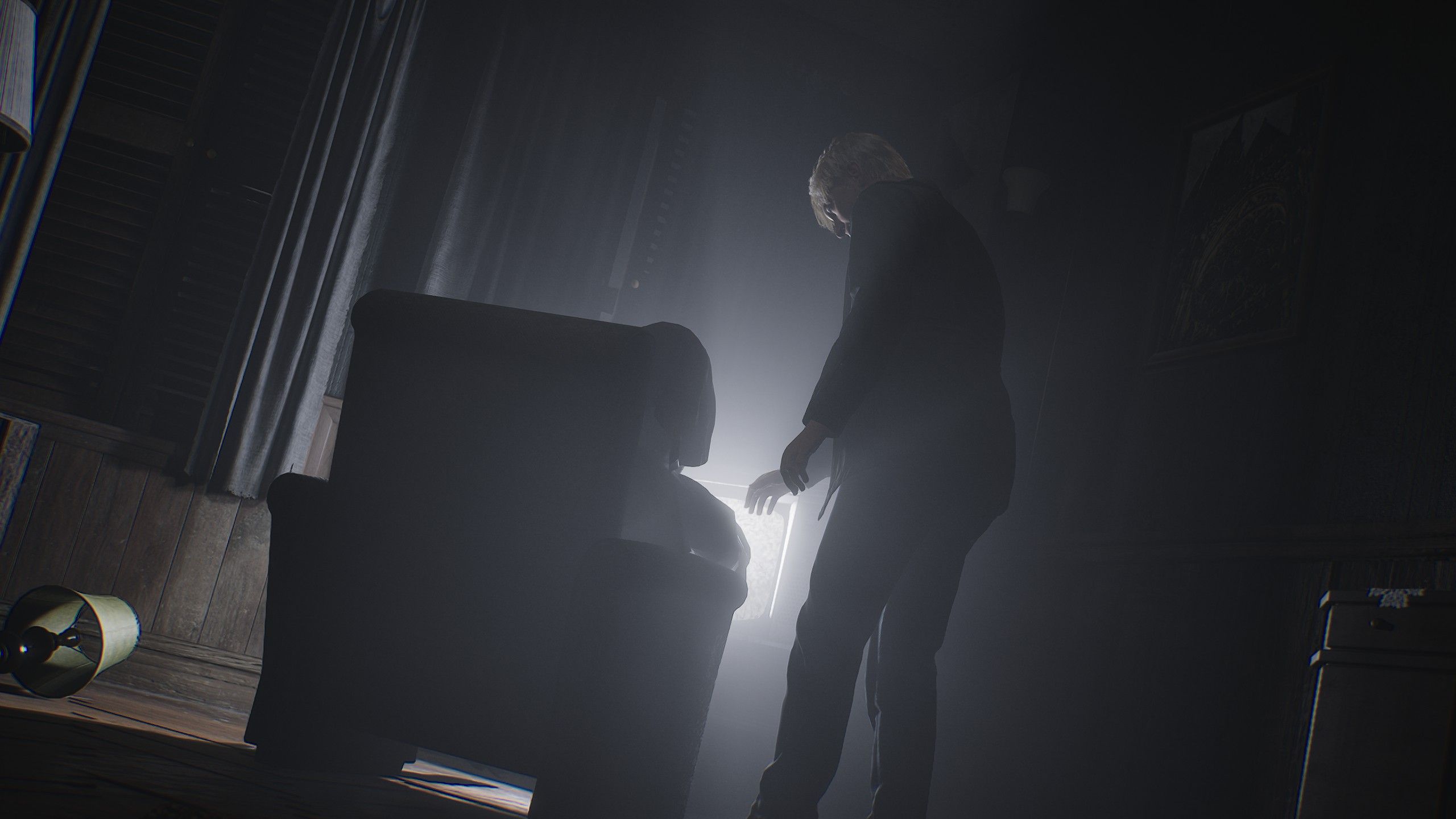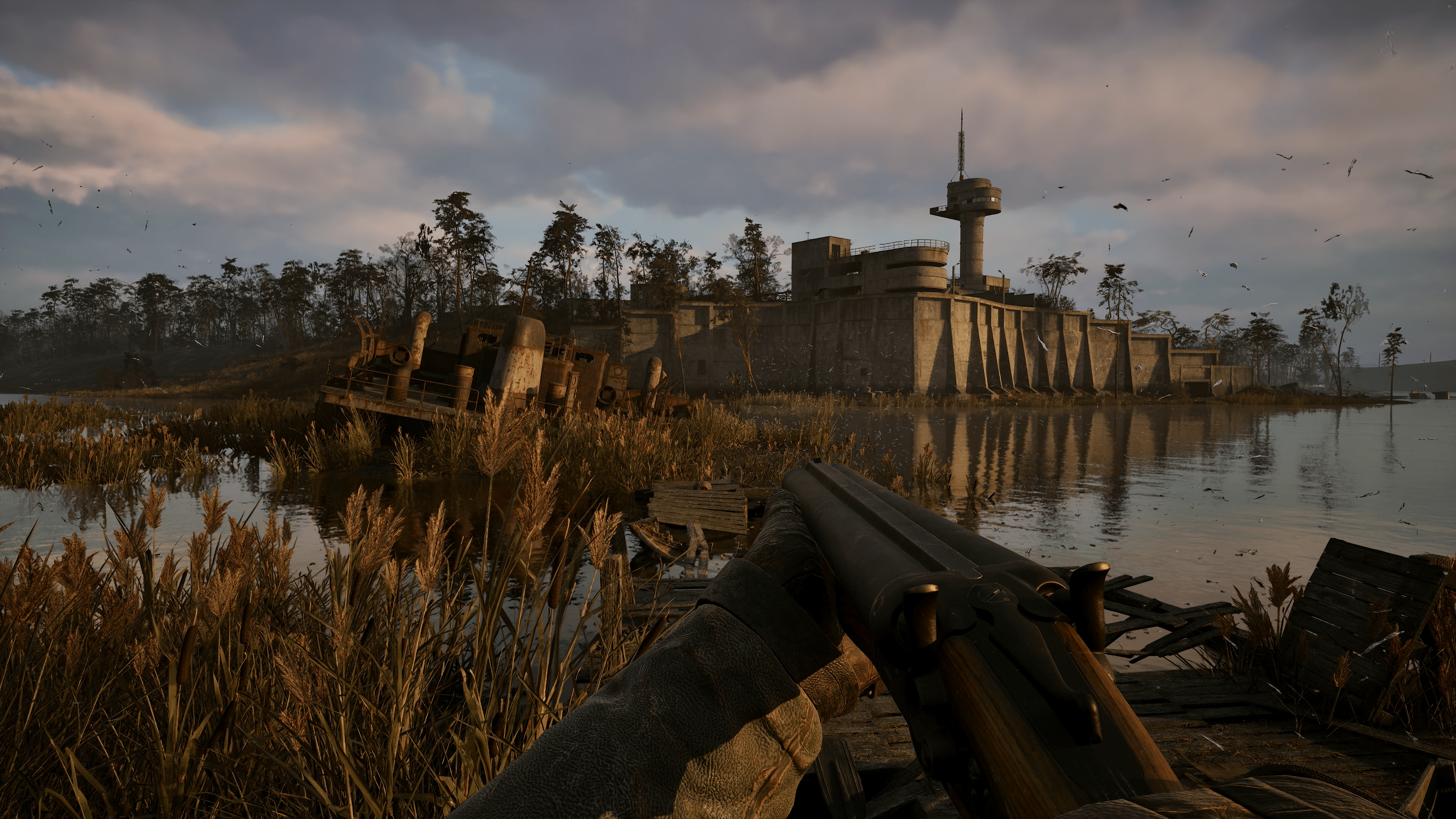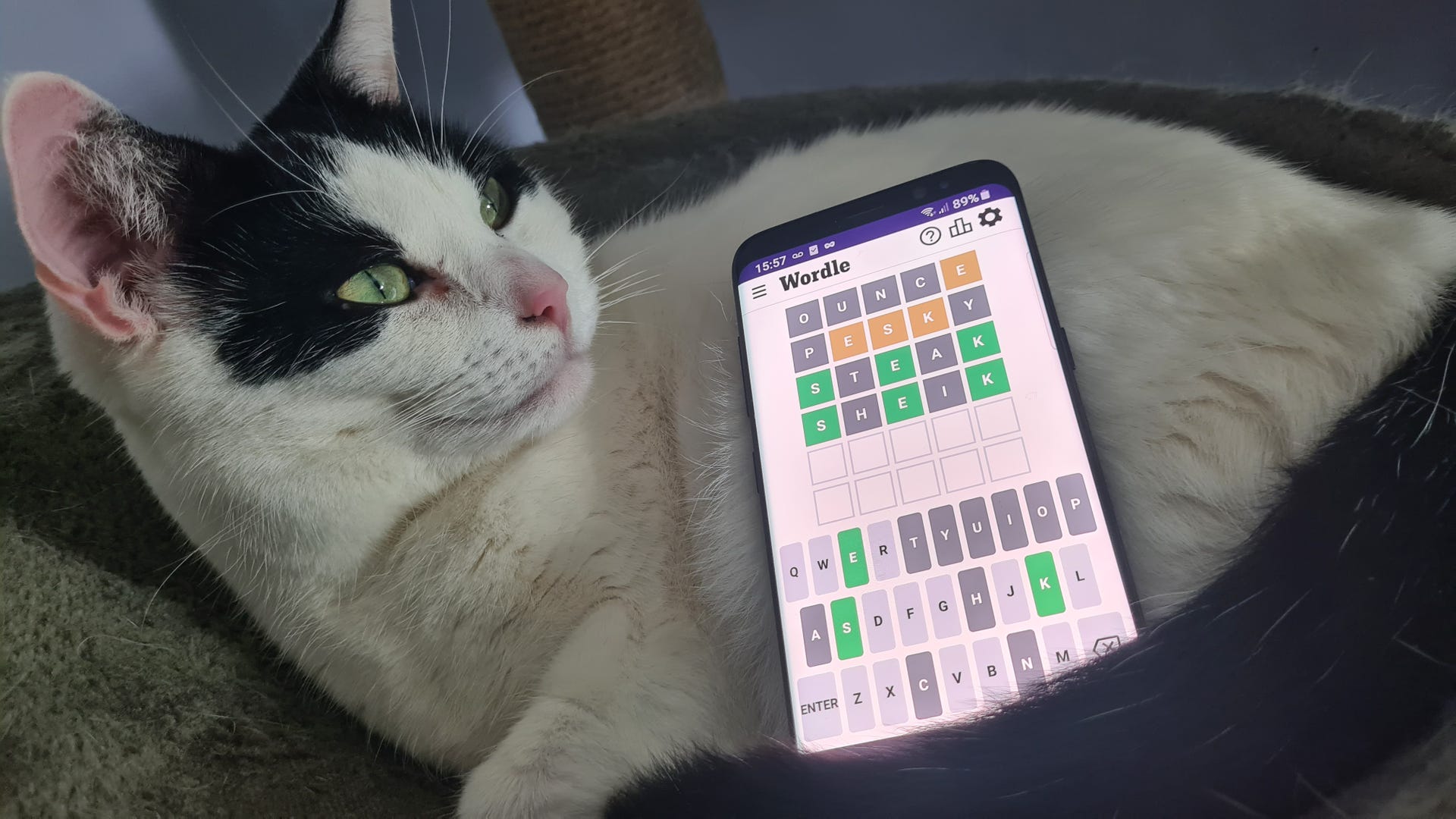
We're rerunning Richard Cobbett's classic Crapshoot column, in which he rolled the dice and took a chance on obscure games—both good and bad.
From 2010 to 2014 Richard Cobbett wrote Crapshoot, a column about rolling the dice to bring random games back into the light. This week, a game that wanted to play its cards right, but did not.
Blizzard may have taken the world by storm with its World of Warcraft CCG Hearthstone, but that’s far from the first attempt to merge worlds and cards. Obviously. There was Scrolls, several Magic: The Gathering games, EA’s Battle Forge, and a few more. Go back to 2000 though, and there was this little action game/CCG hybrid, which I would snarkily refer to as Sanity: Pointless Subtitle if every screen in the actual game didn’t make it clear that its true name is simply “Aiken’s Artifact”.
Is big selling point was “Starring Ice-T”. And Monolith wondered why it didn’t sell…
I’ll be honest, I’d forgotten how strange this game was. The basic idea was to merge a kind of action-RPG style with collectible cards, with a few given away for free and (if I remember correctly) plans for booster packs that would keep the multiplayer fresh and interesting until the end of time. This being a 3D action game from 2000 though, with the internet still a novelty to most, that was a thing that Was Never Going To Happen.
In the end, creators Monolith couldn’t even be bothered to patch it properly, and Sanity went into the weird and wonderful pile of games Monolith kept spitting out in an attempt to find something that worked. This would eventually result in two beloved successes that would make the company’s name—No One Lives Forever, or to be more accurate (and courtesy of the same skill at naming that gave us this game’s lousy title) The Operative: No One Lives Forever, and F.E.A.R, which stands for Forget English, Acronyms Rule.
In getting to that point, its name appeared on a ridiculously wide range of games—either as publisher or developer—including a cartoon mascot platformer called Claw, a truly awful adventure called Maabus (we’ll be getting to that at some point, I’m sure), blatant Gauntlet rip-off Get Medieval, and most famously, Shogo: Mobile Armour Division, or to give it its full name, “We’re Watching A Shitload Of Anime In Our Office Right Now: The Game”.
Sanity ended up somewhere in the middle of the pile—not hated, not loved, and landing with nobody quite sure whether to expect an intriguingly different kind of game, or the least enticing thing to do with cards since the sequel to Samantha Fox Strip Poker decided to start with the epidermal layer. (Disclaimer: May not have happened.)
The surprise when replaying it now was that while I can’t say it was better than I remembered, it is a hell of a lot weirder. I was planning to mock it for its silliness, like the fact that main character Agent Cain’s superpower is essentially being the personification of the ’90s. He wears silly shades. He looks like he fell right out of a Dark Age comic called something like Musclebuster. He’s voiced by Ice-T. Even ignoring that the character just screams “We wanted Wesley Snipes instead!”, just listen to his enthusiasm in this interview clip:
And good lord, are the details silly in retrospect. There’s a point on the first level of this futuristic action game where your character’s handler—who almost remembered to get dressed in the morning—earnestly demands Cain send her some information by fax, via a phone that looks like a housebrick with buttons. Cain has an evil brother, called—of course—Abel, begging some serious questions about the scientist responsible for this.
But here’s the thing. Like a lot of games, it starts with its tongue in its cheek. By about halfway through the first level though, it’s taking the piss with a catheter.
The premise is that psionic powers have been discovered and are now spreading, with Agent Cain working for the department responsible for handling them. Who’s your first target? A woman who runs an evil psychic hotline, whose attempts to get Cain to join her almost immediately descend into insults about cupcakes. You get a mind-reading power, and just about everyone gets a secret to uncover. And later… well, I’ll get to later in a minute.
The CCG element is that people with psionic powers draw their abilities from specific totems, like Fire or Sun or Storm, with each power represented by a card. You gather them up during the single-player game, building a deck—though unlike most, you can swap and change whenever you like. A couple of them are very handy for pushing blocks around. They become increasingly important, and time-consuming.
Cain’s speciality is Fire, which makes for an immediate head-desk moment when you’re told that he has a tendency to cause a lot of collateral damage when he goes on missions. Really? The guy whose only powers involve explosive fireballs with incredible concussive force sometimes misses? Who’d have thought?! It’s as if the boss who sends him into civilian areas needs his head examined, and not for evidence of psionic ability. You want subtlety, use a sniper rifle.
Each of the bosses has their own theme, and by killing them you absorb their powers. Others are provided by cards dropped or otherwise unlocked during missions. Somewhat oddly, they’re treated as being tradable in-game too, with people selling ‘talents’ and characters handing cards over that perform different actions, with a black-market for them. By the end, you’ve got a huge range of attacks and utility spells, though the fact this is an action game renders most of them pretty useless.
The big in-game problem is that the more powers a person uses, the more insane they become, as depicted by a blue ball of liquid that can be replenished by picking up vials of blue serum. “But Richard,” you cry, “Isn’t that just mana?” I ignore the question because I can’t hear you.
Unrelated though, this is of course means it’s just mana, and only Cain apparently has to give a damn. He’s also fitted with one of the dumbest things imaginable—a chip in his head that knocks him unconscious if he deliberately or accidentally injures an innocent. That sounds fair enough, but there are quite a few innocents, they’re often toting shotguns and other weapons, and the only way to be sure is to let them get the first shot in even after killing lots and lots of people like them.
Making this sillier, you’re regularly expected to threaten people with a gun to make them do things, like open a security door. Hopefully word of this chip doesn’t spread to the criminal underworld too quickly, because I foresee a few problems.
The first level, aside from taking out Miss Cleo with fireballs, is set in a trailer park with Cain taking out the trash. It’s not the most interesting of levels, and from 2000, that went for just about every level in every action/RPG/adventure—it would be a couple more years before polygons allowed for really interesting stuff.
After that, things get ridiculous hilariously fast—as highlighted by Cain’s outfit. He starts off in a badass future-cop suit, but about halfway in has to go undercover with a tour group and ends up wearing an eye-gouging Hawaiian shirt. He stays in the Hawaiian shirt for the rest of the game, which includes fighting demons and going up against the devotee of a civilisation-munching abomination.
Then it really starts to get silly. A whole level is devoted to defeating an illusionist, but before you can even fight him, you’ve got to take part in a lethal gameshow. You’d think this would be an excuse for waves of enemies. Nope! Trivia.
You and two other contestants are put in deathtraps and asked questions, with the winner going on to face the boss in the final round. You get questions like “What’s the name of the park in the middle of the city?” and “What is the origin of psychic powers?” He gets “Who is the sexiest man in the world?” just so he can preen and answer “Why, would it be me?” At this point, even Cain starts calling bullshit.
But it gets so much stranger. Throughout the game, there’s a government agent who keeps calling Cain to get him to do his dirty work, who sounds almost exactly like Half-Life’s G-Man. And then there’s the Artifact itself, dug up in the desert, and the source of the world’s psionic powers, which turns out to be a disembodied head called Ted, who talks like Stewie Griffin and then spends the rest of the game in a kid’s backpack getting very frustrated at how often Cain gets knocked out by goons to allow for level transitions, and how much he and the kid he’s travelling with keep getting kidnapped by supervillains.
He is of course awesome. There’s something so much fun about completely powerless characters who still think they can talk the talk, whether it’s responding to Cain agreeing to fight a battle of wits with “Oh god, there goes the big rescue!” or randomly asking questions like why golf pencils don’t have erasers on the end.
He’s especially unimpressed in the final battle, when the kid acting as his legs runs back from safety to help Cain in the final fight (which involves using Force Push to knock his brother off the urban equivalent of the Reichenbach Falls) even when the disaster has been averted and everyone’s just heading off for dinner and the sequel that obviously never happened.
What’s going on with the disembodied head? COUGH blatantgalactusripoff COUGH. The big secret of Sanity is that there’s an eldritch abomination called the Sanity Devourer—or rather, not called that, but Ted decides human tongues can’t pronounce its real name—which goes around eating psionic civilisations. Ted’s job is to find them, unlock their psionic potential, and then signal his master for lunch.
He’s bored of doing that now, especially since it usually means lots of waiting around, and so has no plans to, but another crazy psionic wants his job. I’ll admit it, while the inspiration for this may not be completely untapped ground, I sure as hell didn’t see this plot twist coming.
While the game itself isn’t that great, Sanity turned out to be one of the more pleasantly surprising Crapshoot games of late to return to. I remembered a lot of the silliness, but not how much of it was intentional, along with how much it genuinely tried to combine a little action, a little adventure, and a novel (if flawed) approach to multiplayer. The result hasn’t aged well, but the ideas behind it are to its credit. Certainly, it’s easy to see how the company that made this also made No One Lives Forever, with surprisingly good writing underneath its initially very generic setting. It wasn’t good enough to really deserve to succeed, but to be remembered fondly despite its flaws? Definitely.
Though it’s still an international tragedy we only got two NOLF games. Sigh.





